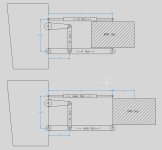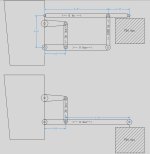LD1
Epic Contributor
Boy Im glad youre here. Now I can take a rest!
mwb, there are other ways to to get a handle on how much force can be applied where. Use an energy calculation combined with empirical observation. As you know E=FxD. In lifting a load the tractor eyes apply a force for a distance. This Energy is stored in the load. Thus if the load rises more than the eyes it has to weigh proportionately less than the upward force provided by the eyes. [Since there will be rotation in this case it will be necessary to measure the rise of the estimated center of mass.] Alternately, if the load rises the same as the eyes [as it does w a perfect // linkage] the eyes provided a force of exactly the loads weight.
larry
I'm glad there are at least two of us that understand how things like this work.
I think the forklift example I gave in an earlier post is a perfect comparison for this. A force is applied in an upward motion and a load at some distance away, it doesn't matter what the distance is, it takes the same upward motion to lift, however, the further the load is away, the greater the stress on the components, and more likely to tip over, but same force. A perfect //ogram is the same in that it applies an upward force to a load that will remain leved (ie, move the same distance as the ball ends). It's just the method for applying the force is different, but the same force is required.


